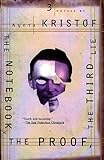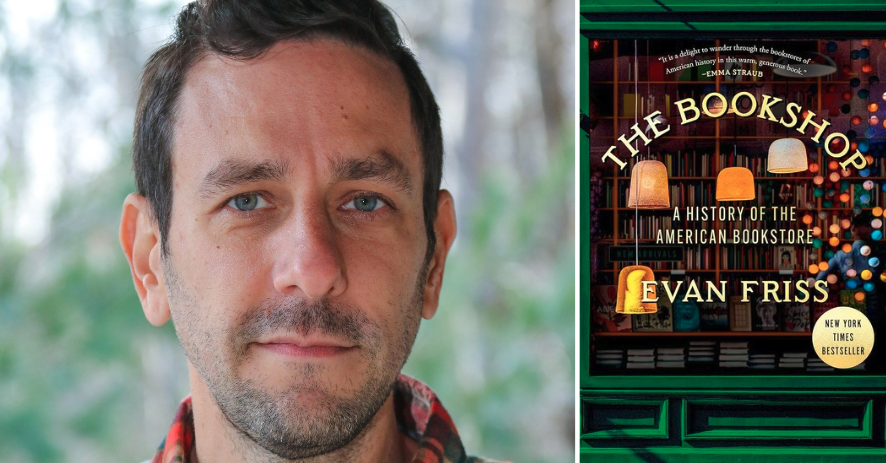On a desert plain out West, the Lone Ranger and Tonto are surrounded by a band of Indians, all of them slowly closing in. Sunlight reflects off tomahawks. War paint covers furious scowls. “Looks like we’re done for, Tonto,” says the Lone Ranger, to which Tonto replies, “What do you mean ‘we,’ white man?”
That old joke raises a question other than its own punch line. Why would anyone decide to write a novel in first-person plural, a point of view that, like second-person, is often accused of being nothing but an authorial gimmick? Once mockingly ascribed to royalty, editors, pregnant women, and individuals with tapeworms, the “we” voice can, when used in fiction, lead to overly lyrical descriptions, time frames that shift too much, and a lack of narrative arc.
In many cases of first-person plural, however, those pitfalls become advantageous. The narration is granted an intimate omniscience. Various settings can be shuffled between elegantly. The voice is allowed to luxuriate on scenic details. Here are a few novels that prove first-person plural is more of a neat trick than a cheap one.
The Virgin Suicides by Jeffrey Eugenides
 Prior to the publication of The Virgin Suicides, most people, when asked about first-person plural, probably thought of William Faulkner’s “A Rose for Emily.” This novel changed that. A group of men look back on their childhood in 1970s suburban Michigan, particularly “the year of the suicides,” a time when the five Lisbon sisters took turns providing the novel its title. Most remarkable about Eugenides’s debut is not those tragic events, however, but the narrative voice, so melancholy, vivid, deadpan, and graceful in its depiction not only of the suicides but also of adolescent minutiae. Playing cards stuck in bicycle spokes get as much attention as razor blades dragged across wrists. Throughout the novel, Eugenides, aware of first-person plural’s roots in classical drama, gives his narrators functions greater than those of a Greek chorus. They don’t merely comment on the action, provide background information, and voice the interiority of other characters. The collective narrators of The Virgin Suicides are really the protagonists. Ultimately their lives prove more dynamic than the deaths of the sisters. “It didn’t matter in the end how old they had been, or that they were girls, but only that we had loved them, and that they hadn’t heard us calling.”
Prior to the publication of The Virgin Suicides, most people, when asked about first-person plural, probably thought of William Faulkner’s “A Rose for Emily.” This novel changed that. A group of men look back on their childhood in 1970s suburban Michigan, particularly “the year of the suicides,” a time when the five Lisbon sisters took turns providing the novel its title. Most remarkable about Eugenides’s debut is not those tragic events, however, but the narrative voice, so melancholy, vivid, deadpan, and graceful in its depiction not only of the suicides but also of adolescent minutiae. Playing cards stuck in bicycle spokes get as much attention as razor blades dragged across wrists. Throughout the novel, Eugenides, aware of first-person plural’s roots in classical drama, gives his narrators functions greater than those of a Greek chorus. They don’t merely comment on the action, provide background information, and voice the interiority of other characters. The collective narrators of The Virgin Suicides are really the protagonists. Ultimately their lives prove more dynamic than the deaths of the sisters. “It didn’t matter in the end how old they had been, or that they were girls, but only that we had loved them, and that they hadn’t heard us calling.”
Our Kind by Kate Walbert
 This title would work for just about any book on this list. A collection of stories interconnected enough to be labeled a novel, Our Kind is narrated by ten women, suburban divorcees reminiscent of Cheever characters.
This title would work for just about any book on this list. A collection of stories interconnected enough to be labeled a novel, Our Kind is narrated by ten women, suburban divorcees reminiscent of Cheever characters.
We’ve seen a lot. We’ve seen the murder-suicide of the Clifford Jacksons, Tate Kieley jailed for embezzlement, Dorothy Schoenbacher in nothing but a mink coat in August dive from the roof of the Cooke’s Inn. We’ve seen Dick Morehead arrested in the ladies’ dressing room at Lord & Taylor, attempting to squeeze into a petite teddy. We’ve seen Francis Stoney gone mad, Brenda Nelson take to cocaine. We’ve seen the blackballing of the Steward Collisters. We’ve seen more than our share of liars and cheats, thieves. Drunks? We couldn’t count.
That passage exemplifies a technique, the lyrical montage, particularly suited to first-person plural. Each perspective within a collective narrator is a mirror in the kaleidoscope of story presentation. To create a montage all an author has to do is turn the cylinder. Walbert does so masterfully in Our Kind.
During the Reign of the Queen of Persia by Joan Chase
 “There were the four of us — Celia and Jenny, who were sisters, Anne and Katie, sisters too, like our mothers, who were sisters.” In her New York Times review, Margaret Atwood considered this novel, narrated by those four cousins, to be concerned with “the female matrix,” comparing it to works by Anne Tyler and Marilynne Robinson. First-person plural often renders itself along such gender matrices. This novel is unique in that its single-gender point of view is not coalesced around a subject of the opposite gender. Its female narrators examine the involutions of womanhood by delineating other female characters. Similar in that respect to another first-person-plural novel, Tova Mirvis’s The Ladies Auxiliary, During the Reign of the Queen of Persia, taking an elliptical approach to time, braids its young narrators’ lives with those of the other women in their family to create a beautifully written, impressionistic view of childhood.
“There were the four of us — Celia and Jenny, who were sisters, Anne and Katie, sisters too, like our mothers, who were sisters.” In her New York Times review, Margaret Atwood considered this novel, narrated by those four cousins, to be concerned with “the female matrix,” comparing it to works by Anne Tyler and Marilynne Robinson. First-person plural often renders itself along such gender matrices. This novel is unique in that its single-gender point of view is not coalesced around a subject of the opposite gender. Its female narrators examine the involutions of womanhood by delineating other female characters. Similar in that respect to another first-person-plural novel, Tova Mirvis’s The Ladies Auxiliary, During the Reign of the Queen of Persia, taking an elliptical approach to time, braids its young narrators’ lives with those of the other women in their family to create a beautifully written, impressionistic view of childhood.
The Jane Austen Book Club by Karen Joy Fowler
 Novels written in first-person plural typically have one of four basic narrative structures: an investigation, gossip, some large and/or strange event, and family life. The Jane Austen Book Club uses all four of those structures. The novel manages to do so because its overall design is similar to that of an anthology series. Within the loose framework of a monthly Jane Austen book club, chapters titled after the respective months are presented, each focusing on one of the six group members, whose personal stories correspond to one of Austen’s six novels. The combinations of each character with a book, Jocelyn and Emma, Allegra and Sense and Sensibility, Prudie and Mansfield Park, Grigg and Northanger Abbey, Bernadette and Pride and Prejudice, Sylvia and Persuasion, exemplify one of the novel’s most significant lines. “Each of us has a private Austen.” Moreover, such an adage’s universality proves that, even when first-person plural refers to specific characters, the reader is, however subconsciously, an implicit part of the point of view.
Novels written in first-person plural typically have one of four basic narrative structures: an investigation, gossip, some large and/or strange event, and family life. The Jane Austen Book Club uses all four of those structures. The novel manages to do so because its overall design is similar to that of an anthology series. Within the loose framework of a monthly Jane Austen book club, chapters titled after the respective months are presented, each focusing on one of the six group members, whose personal stories correspond to one of Austen’s six novels. The combinations of each character with a book, Jocelyn and Emma, Allegra and Sense and Sensibility, Prudie and Mansfield Park, Grigg and Northanger Abbey, Bernadette and Pride and Prejudice, Sylvia and Persuasion, exemplify one of the novel’s most significant lines. “Each of us has a private Austen.” Moreover, such an adage’s universality proves that, even when first-person plural refers to specific characters, the reader is, however subconsciously, an implicit part of the point of view.
The Notebook by Agota Kristof
 If one doesn’t include sui generis works such as Ayn Rand’s Anthem — a dystopian novella in which the single narrator speaks in a plural voice because first-person-singular pronouns have been outlawed — Kristof’s The Notebook, narrated by twin brothers, contains the fewest narrators possible in first-person-plural fiction. Its plot has the allegorical vagueness of a fable. Weirder than Eleanor Brown’s The Weird Sisters, another first-person-plural novel narrated by siblings, the brothers in The Notebook are taken by their mother from Big Town to Little Town, where they move in with their grandmother. In an unidentified country based on Hungary they endure cruelty and abuse during an unidentified war based on World War II. To survive they grow remorselessly cold. Kristof’s use of first-person plural allows her to build a multifaceted metaphor out of The Notebook. The twins come to represent not only how war destroys selfhood through depersonalization but also how interdependence is a means to resist the effects of war.
If one doesn’t include sui generis works such as Ayn Rand’s Anthem — a dystopian novella in which the single narrator speaks in a plural voice because first-person-singular pronouns have been outlawed — Kristof’s The Notebook, narrated by twin brothers, contains the fewest narrators possible in first-person-plural fiction. Its plot has the allegorical vagueness of a fable. Weirder than Eleanor Brown’s The Weird Sisters, another first-person-plural novel narrated by siblings, the brothers in The Notebook are taken by their mother from Big Town to Little Town, where they move in with their grandmother. In an unidentified country based on Hungary they endure cruelty and abuse during an unidentified war based on World War II. To survive they grow remorselessly cold. Kristof’s use of first-person plural allows her to build a multifaceted metaphor out of The Notebook. The twins come to represent not only how war destroys selfhood through depersonalization but also how interdependence is a means to resist the effects of war.
The Autumn of the Patriarch by Gabriel Garcia Marquez
 In the same way narrators can be reliable and unreliable, collective narrators can be defined and undefined. The narrators in this novel include both parts of that analogy. They’re unreliably defined. Sometimes the narrators are the people who find the corpse of the titular patriarch, an unnamed dictator of an unnamed country, but sometimes the people who find the corpse are referred to in third-person. Sometimes the narrators are the many generations of army generals. Sometimes the narrators are the former dictators of other countries. Sometimes the point of view is all-inclusive, similar to the occasional, God-like “we” scattered through certain novels, including, for example, Jim Crace’s Being Dead, E.L. Doctorow’s Ragtime, and Paul Auster’s City of Glass. Even the dictator, periodically and confusingly, uses the royal “we.” For the most part, however, the collective narrator encompasses every citizen ruled by the tyrannical despot, people who, after his death, are finally given a voice.
In the same way narrators can be reliable and unreliable, collective narrators can be defined and undefined. The narrators in this novel include both parts of that analogy. They’re unreliably defined. Sometimes the narrators are the people who find the corpse of the titular patriarch, an unnamed dictator of an unnamed country, but sometimes the people who find the corpse are referred to in third-person. Sometimes the narrators are the many generations of army generals. Sometimes the narrators are the former dictators of other countries. Sometimes the point of view is all-inclusive, similar to the occasional, God-like “we” scattered through certain novels, including, for example, Jim Crace’s Being Dead, E.L. Doctorow’s Ragtime, and Paul Auster’s City of Glass. Even the dictator, periodically and confusingly, uses the royal “we.” For the most part, however, the collective narrator encompasses every citizen ruled by the tyrannical despot, people who, after his death, are finally given a voice.
The Buddha in the Attic by Julie Otsuka
 What about first-person plural lends itself so well to rhythm? Julie Otsuka provides an answer to that question with The Buddha in the Attic. In a series of linked narratives, she traces the lives of a group of women, including their journey from Japan to San Francisco, their struggles to assimilate to a new culture, their internment during World War II, and other particulars of the Japanese-American experience. “On the boat we were mostly virgins. We had long black hair and flat wide feet and we were not very tall,” the novel begins. “Some of us had eaten nothing but rice gruel as young girls and had slightly bowed legs, and some of us were only fourteen years old and were still young girls ourselves.” Although the narrators are, for the most part, presented as a collective voice, each of their singular voices are dashed throughout the novel, in the form of italicized sentences. It is in that way Otsuka creates a rhythm. The plural lines become the flat notes, singular lines the sharp notes, all combining to form a measured beat.
What about first-person plural lends itself so well to rhythm? Julie Otsuka provides an answer to that question with The Buddha in the Attic. In a series of linked narratives, she traces the lives of a group of women, including their journey from Japan to San Francisco, their struggles to assimilate to a new culture, their internment during World War II, and other particulars of the Japanese-American experience. “On the boat we were mostly virgins. We had long black hair and flat wide feet and we were not very tall,” the novel begins. “Some of us had eaten nothing but rice gruel as young girls and had slightly bowed legs, and some of us were only fourteen years old and were still young girls ourselves.” Although the narrators are, for the most part, presented as a collective voice, each of their singular voices are dashed throughout the novel, in the form of italicized sentences. It is in that way Otsuka creates a rhythm. The plural lines become the flat notes, singular lines the sharp notes, all combining to form a measured beat.
Then We Came to the End by Joshua Ferris
 For his first novel’s epigraph, Ferris quotes Ralph Waldo Emerson, “Is it not the chief disgrace of this world, not to be a unit; — not to be reckoned one character; — not to yield that peculiar fruit which each man was created to bear, but to be reckoned in the gross, in the hundred, or the thousand, of the party, the section, to which we belong…” The line nicely plays into this novel about corporate plurality. At an ad agency in Chicago post-dot-com boom, the employees distract themselves from the economic downturn with office hijinks, stealing each other’s chairs, wearing three company polo shirts at once, going an entire day speaking only quotes from The Godfather. The narrative arc is more of a plummet. Nonetheless, Ferris manages to turn a story doomed from the beginning — the title, nabbed from DeLillo’s first novel, says it all — into a hilarious and heartfelt portrait of employment. Ed Park’s Personal Days, somewhat overshadowed by the critical success of this novel, uses a similar collective narrator.
For his first novel’s epigraph, Ferris quotes Ralph Waldo Emerson, “Is it not the chief disgrace of this world, not to be a unit; — not to be reckoned one character; — not to yield that peculiar fruit which each man was created to bear, but to be reckoned in the gross, in the hundred, or the thousand, of the party, the section, to which we belong…” The line nicely plays into this novel about corporate plurality. At an ad agency in Chicago post-dot-com boom, the employees distract themselves from the economic downturn with office hijinks, stealing each other’s chairs, wearing three company polo shirts at once, going an entire day speaking only quotes from The Godfather. The narrative arc is more of a plummet. Nonetheless, Ferris manages to turn a story doomed from the beginning — the title, nabbed from DeLillo’s first novel, says it all — into a hilarious and heartfelt portrait of employment. Ed Park’s Personal Days, somewhat overshadowed by the critical success of this novel, uses a similar collective narrator.
The Fates Will Find a Way by Hannah Pittard
 Define hurdle. To be an author of one gender writing from the point of view of characters of the opposite gender investigating the life of a character of said author’s own gender. The most impressive thing about The Fates Will Find Their Way is how readily Pittard accomplishes such a difficult task. Despite one instance of an “I” used in the narration, the story is told in first-person plural by a collection of boys, now grown men, pondering the fate of a neighborhood girl, Nora Lindell, who went missing years ago. Every possible solution to the mystery of what happened to the girl — Heidi Julavits’s The Uses of Enchantment works similarly, as does Tim O’Brien’s In the Lake of the Woods — becomes a projection of the characters affected by her absence. In that way this novel exemplifies a key feature of many novels, including most on this list, narrated by characters who observe more than they participate. The narrators are the protagonists. It can be argued, for example, that The Great Gatsby is really the story of its narrator, Nick Carraway, even though other characters have more active roles. Same goes for James Salter’s A Sport and a Pastime, Clarice Lispector’s The Hour of the Star, Junot Diaz’s The Brief Wondrous Life of Oscar Wao, and Nancy Lemann’s Lives of the Saints, to name a few. What’s more important, after all, the prism or the light?
Define hurdle. To be an author of one gender writing from the point of view of characters of the opposite gender investigating the life of a character of said author’s own gender. The most impressive thing about The Fates Will Find Their Way is how readily Pittard accomplishes such a difficult task. Despite one instance of an “I” used in the narration, the story is told in first-person plural by a collection of boys, now grown men, pondering the fate of a neighborhood girl, Nora Lindell, who went missing years ago. Every possible solution to the mystery of what happened to the girl — Heidi Julavits’s The Uses of Enchantment works similarly, as does Tim O’Brien’s In the Lake of the Woods — becomes a projection of the characters affected by her absence. In that way this novel exemplifies a key feature of many novels, including most on this list, narrated by characters who observe more than they participate. The narrators are the protagonists. It can be argued, for example, that The Great Gatsby is really the story of its narrator, Nick Carraway, even though other characters have more active roles. Same goes for James Salter’s A Sport and a Pastime, Clarice Lispector’s The Hour of the Star, Junot Diaz’s The Brief Wondrous Life of Oscar Wao, and Nancy Lemann’s Lives of the Saints, to name a few. What’s more important, after all, the prism or the light?








